- Become A Member
- Gift Membership
- Kids Membership
- Other Ways to Give
- Explore Worlds
- Defend Earth

How We Work
- Education & Public Outreach
- Space Policy & Advocacy
- Science & Technology
- Global Collaboration
Our Results
Learn how our members and community are changing the worlds.
Our citizen-funded spacecraft successfully demonstrated solar sailing for CubeSats.
Space Topics
- Planets & Other Worlds
- Space Missions
- Space Policy
- Planetary Radio
- Space Images
The Planetary Report
The eclipse issue.
Science and splendor under the shadow.
Get Involved
Membership programs for explorers of all ages.
Get updates and weekly tools to learn, share, and advocate for space exploration.
Volunteer as a space advocate.
Support Our Mission
- Renew Membership
- Society Projects
The Planetary Fund
Accelerate progress in our three core enterprises — Explore Worlds, Find Life, and Defend Earth. You can support the entire fund, or designate a core enterprise of your choice.
- Strategic Framework
- News & Press
The Planetary Society
Know the cosmos and our place within it.
Our Mission
Empowering the world's citizens to advance space science and exploration.
- Explore Space
- Take Action
- Member Community
- Account Center
- “Exploration is in our nature.” - Carl Sagan
Rae Paoletta • Mar 03, 2022
The best space pictures from the Voyager 1 and 2 missions
Launched in 1977, NASA’s Voyager 1 and 2 missions provided an unprecedented glimpse into the outer solar system — a liminal space once left largely to the imagination. The spacecraft provided views of worlds we’d never seen before, and in some cases, haven’t seen much of since.
The Voyager probes were launched about two weeks apart and had different trajectories, like two tour guides at the same museum. Only Voyager 2 visited the ice giants — Uranus and Neptune — for example.
The Voyagers hold a unique position in the pantheon of space history because they’re still making it; even right now, Voyagers 1 and 2 are the only functioning spacecraft in interstellar space. Both hold a Golden Record that contains sights and sounds of Earth in case alien life were to find one of the spacecraft.
As the Voyager missions voyage on, it’s good to look back at how they captured our solar system before leaving it.
This content is hosted by a third party (youtube.com), which uses marketing cookies. Please accept marketing cookies to watch this video.
Let’s Go Beyond The Horizon
Every success in space exploration is the result of the community of space enthusiasts, like you, who believe it is important. You can help usher in the next great era of space exploration with your gift today.
For full functionality of this site it is necessary to enable JavaScript. Here are instructions on how to enable JavaScript in your web browser .

Suggested Searches
- Climate Change
- Expedition 64
- Mars perseverance
- SpaceX Crew-2
- International Space Station
- View All Topics A-Z
Humans in Space
Earth & climate, the solar system, the universe, aeronautics, learning resources, news & events.

NASA-Led Study Provides New Global Accounting of Earth’s Rivers

NASA’s Hubble Pauses Science Due to Gyro Issue

NASA’s Optical Comms Demo Transmits Data Over 140 Million Miles
- Search All NASA Missions
- A to Z List of Missions
- Upcoming Launches and Landings
- Spaceships and Rockets
- Communicating with Missions
- James Webb Space Telescope
- Hubble Space Telescope
- Why Go to Space
- Astronauts Home
- Commercial Space
- Destinations
- Living in Space
- Explore Earth Science
- Earth, Our Planet
- Earth Science in Action
- Earth Multimedia
- Earth Science Researchers
- Pluto & Dwarf Planets
- Asteroids, Comets & Meteors
- The Kuiper Belt
- The Oort Cloud
- Skywatching
- The Search for Life in the Universe
- Black Holes
- The Big Bang
- Dark Energy & Dark Matter
- Earth Science
- Planetary Science
- Astrophysics & Space Science
- The Sun & Heliophysics
- Biological & Physical Sciences
- Lunar Science
- Citizen Science
- Astromaterials
- Aeronautics Research
- Human Space Travel Research
- Science in the Air
- NASA Aircraft
- Flight Innovation
- Supersonic Flight
- Air Traffic Solutions
- Green Aviation Tech
- Drones & You
- Technology Transfer & Spinoffs
- Space Travel Technology
- Technology Living in Space
- Manufacturing and Materials
- Science Instruments
- For Kids and Students
- For Educators
- For Colleges and Universities
- For Professionals
- Science for Everyone
- Requests for Exhibits, Artifacts, or Speakers
- STEM Engagement at NASA
- NASA's Impacts
- Centers and Facilities
- Directorates
- Organizations
- People of NASA
- Internships
- Our History
- Doing Business with NASA
- Get Involved
- Aeronáutica
- Ciencias Terrestres
- Sistema Solar
- All NASA News
- Video Series on NASA+
- Newsletters
- Social Media
- Media Resources
- Upcoming Launches & Landings
- Virtual Events
- Sounds and Ringtones
- Interactives
- STEM Multimedia

Correction and Clarification of C.26 Rapid Mission Design Studies for Mars Sample Return

NASA’s Commercial Partners Deliver Cargo, Crew for Station Science

NASA Shares Lessons of Human Systems Integration with Industry

Work Underway on Large Cargo Landers for NASA’s Artemis Moon Missions

NASA’s ORCA, AirHARP Projects Paved Way for PACE to Reach Space

Amendment 11: Physical Oceanography not solicited in ROSES-2024

Why is Methane Seeping on Mars? NASA Scientists Have New Ideas

Mars Science Laboratory: Curiosity Rover

Hubble Spots a Magnificent Barred Galaxy

NASA’s Chandra Releases Doubleheader of Blockbuster Hits

Explore the Universe with the First E-Book from NASA’s Fermi

NASA Grant Brings Students at Underserved Institutions to the Stars

NASA Photographer Honored for Thrilling Inverted In-Flight Image

NASA’s Ingenuity Mars Helicopter Team Says Goodbye … for Now

NASA Langley Team to Study Weather During Eclipse Using Uncrewed Vehicles

NASA Data Helps Beavers Build Back Streams

NASA’s Near Space Network Enables PACE Climate Mission to ‘Phone Home’

Washington State High Schooler Wins 2024 NASA Student Art Contest

NASA STEM Artemis Moon Trees

Kiyun Kim: From Intern to Accessibility Advocate

Diez maneras en que los estudiantes pueden prepararse para ser astronautas

Astronauta de la NASA Marcos Berríos

Resultados científicos revolucionarios en la estación espacial de 2023
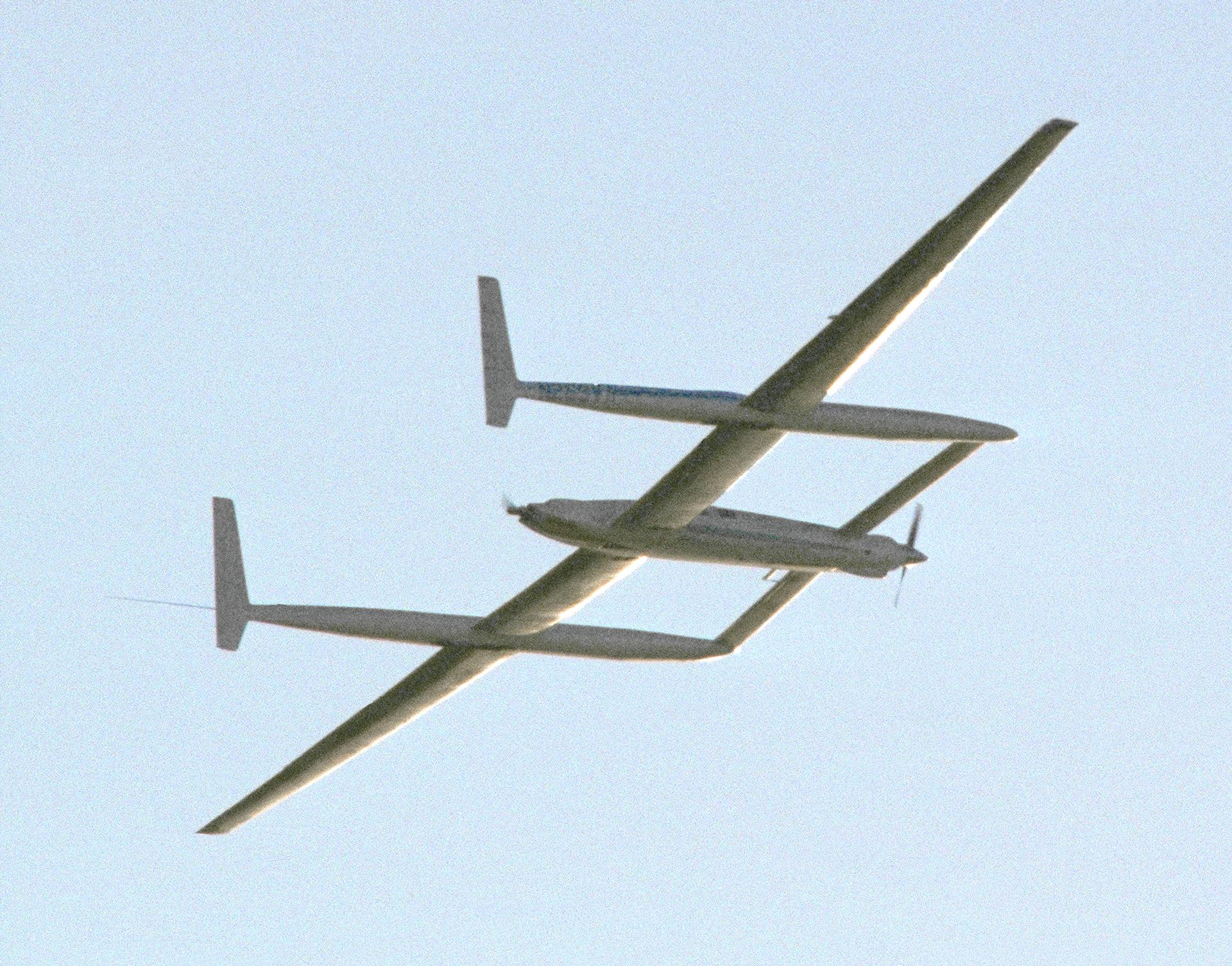

The most distant human-made object

No spacecraft has gone farther than NASA's Voyager 1. Launched in 1977 to fly by Jupiter and Saturn, Voyager 1 crossed into interstellar space in August 2012 and continues to collect data.
Mission Type
What is Voyager 1?
Voyager 1 has been exploring our solar system for more than 45 years. The probe is now in interstellar space, the region outside the heliopause, or the bubble of energetic particles and magnetic fields from the Sun.
- Voyager 1 was the first spacecraft to cross the heliosphere, the boundary where the influences outside our solar system are stronger than those from our Sun.
- Voyager 1 is the first human-made object to venture into interstellar space.
- Voyager 1 discovered a thin ring around Jupiter and two new Jovian moons: Thebe and Metis.
- At Saturn, Voyager 1 found five new moons and a new ring called the G-ring.
In Depth: Voyager 1
Voyager 1 was launched after Voyager 2, but because of a faster route, it exited the asteroid belt earlier than its twin, having overtaken Voyager 2 on Dec. 15, 1977.
Voyager 1 at Jupiter
Voyager 1 began its Jovian imaging mission in April 1978 at a range of 165 million miles (265 million km) from the planet. Images sent back by January the following year indicated that Jupiter’s atmosphere was more turbulent than during the Pioneer flybys in 1973–1974.
Beginning on January 30, Voyager 1 took a picture every 96 seconds for a span of 100 hours to generate a color timelapse movie to depict 10 rotations of Jupiter. On Feb. 10, 1979, the spacecraft crossed into the Jovian moon system and by early March, it had already discovered a thin (less than 30 kilometers thick) ring circling Jupiter.
Voyager 1’s closest encounter with Jupiter was at 12:05 UT on March 5, 1979 at a range of about 174,000 miles (280,000 km). It encountered several of Jupiter’s Moons, including Amalthea, Io, Europa, Ganymede, and Callisto, returning spectacular photos of their terrain, opening up completely new worlds for planetary scientists.
The most interesting find was on Io, where images showed a bizarre yellow, orange, and brown world with at least eight active volcanoes spewing material into space, making it one of the most (if not the most) geologically active planetary body in the solar system. The presence of active volcanoes suggested that the sulfur and oxygen in Jovian space may be a result of the volcanic plumes from Io which are rich in sulfur dioxide. The spacecraft also discovered two new moons, Thebe and Metis.
Voyager 1 at Saturn
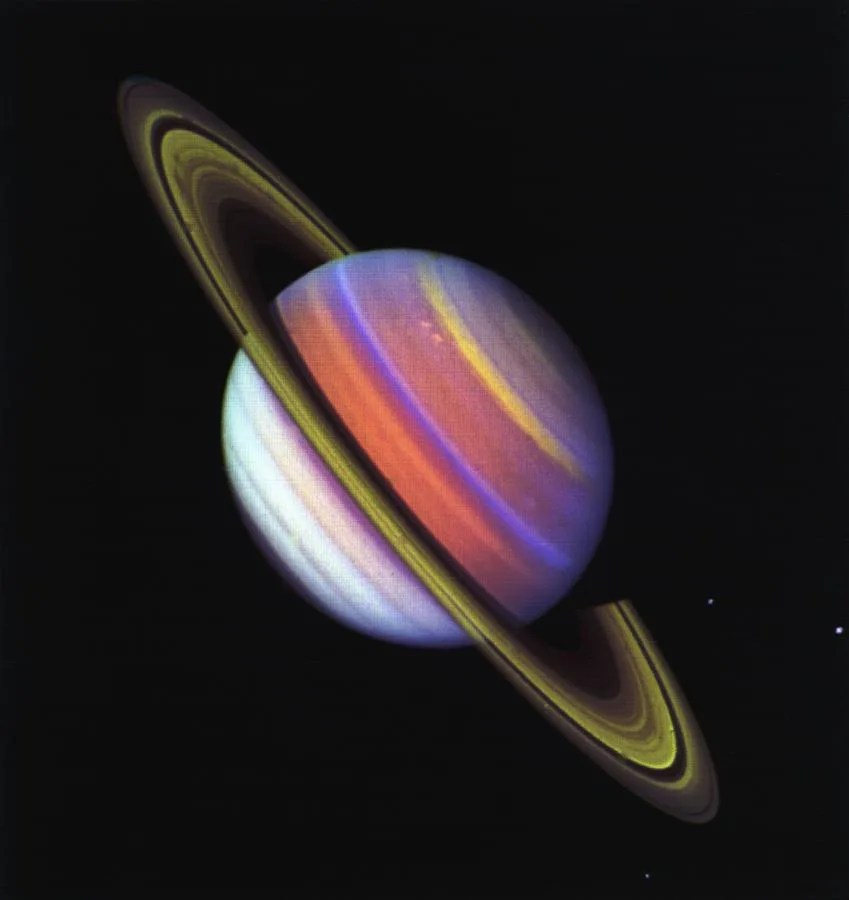
Following the Jupiter encounter, Voyager 1 completed an initial course correction on April 9, 1979 in preparation for its meeting with Saturn. A second correction on Oct. 10, 1979 ensured that the spacecraft would not hit Saturn’s moon Titan.
Its flyby of the Saturn system in November 1979 was as spectacular as its previous encounter. Voyager 1 found five new moons, a ring system consisting of thousands of bands, wedge-shaped transient clouds of tiny particles in the B ring that scientists called “spokes,” a new ring (the “G-ring”), and “shepherding” satellites on either side of the F-ring—satellites that keep the rings well-defined.
During its flyby, the spacecraft photographed Saturn’s moons Titan, Mimas, Enceladus, Tethys, Dione, and Rhea. Based on incoming data, all the moons appeared to be composed largely of water ice. Perhaps the most interesting target was Titan, which Voyager 1 passed at 05:41 UT on November 12 at a range of 2,500 miles (4,000 km). Images showed a thick atmosphere that completely hid the surface. The spacecraft found that the moon’s atmosphere was composed of 90% nitrogen. Pressure ad temperature at the surface was 1.6 atmospheres and 356 °F (–180°C), respectively.
Atmospheric data suggested that Titan might be the first body in the solar system (apart from Earth) where liquid might exist on the surface. In addition, the presence of nitrogen, methane, and more complex hydrocarbons indicated that prebiotic chemical reactions might be possible on Titan.
Voyager 1’s closest approach to Saturn was at 23:46 UT on 12 Nov. 12, 1980 at a range of 78,000 miles(126,000 km).
Voyager 1’s ‘Family Portrait’ Image
Following the encounter with Saturn, Voyager 1 headed on a trajectory escaping the solar system at a speed of about 3.5 AU per year, 35° out of the ecliptic plane to the north, in the general direction of the Sun’s motion relative to nearby stars. Because of the specific requirements for the Titan flyby, the spacecraft was not directed to Uranus and Neptune.
The final images taken by the Voyagers comprised a mosaic of 64 images taken by Voyager 1 on Feb. 14, 1990 at a distance of 40 AU of the Sun and all the planets of the solar system (although Mercury and Mars did not appear, the former because it was too close to the Sun and the latter because Mars was on the same side of the Sun as Voyager 1 so only its dark side faced the cameras).
This was the so-called “pale blue dot” image made famous by Cornell University professor and Voyager science team member Carl Sagan (1934-1996). These were the last of a total of 67,000 images taken by the two spacecraft.
Voyager 1’s Interstellar Mission
All the planetary encounters finally over in 1989, the missions of Voyager 1 and 2 were declared part of the Voyager Interstellar Mission (VIM), which officially began on Jan. 1, 1990.
The goal was to extend NASA’s exploration of the solar system beyond the neighborhood of the outer planets to the outer limits of the Sun’s sphere of influence, and “possibly beyond.” Specific goals include collecting data on the transition between the heliosphere, the region of space dominated by the Sun’s magnetic field and solar field, and the interstellar medium.
On Feb. 17, 1998, Voyager 1 became the most distant human-made object in existence when, at a distance of 69.4 AU from the Sun when it “overtook” Pioneer 10.
On Dec. 16, 2004, Voyager scientists announced that Voyager 1 had reported high values for the intensity for the magnetic field at a distance of 94 AU, indicating that it had reached the termination shock and had now entered the heliosheath.
The spacecraft finally exited the heliosphere and began measuring the interstellar environment on Aug. 25, 2012, the first spacecraft to do so.
On Sept. 5, 2017, NASA marked the 40th anniversary of its launch, as it continues to communicate with NASA’s Deep Space Network and send data back from four still-functioning instruments—the cosmic ray telescope, the low-energy charged particles experiment, the magnetometer, and the plasma waves experiment.
The Golden Record

Each of the Voyagers contain a “message,” prepared by a team headed by Carl Sagan, in the form of a 12-inch (30 cm) diameter gold-plated copper disc for potential extraterrestrials who might find the spacecraft. Like the plaques on Pioneers 10 and 11, the record has inscribed symbols to show the location of Earth relative to several pulsars.
The records also contain instructions to play them using a cartridge and a needle, much like a vinyl record player. The audio on the disc includes greetings in 55 languages, 35 sounds from life on Earth (such as whale songs, laughter, etc.), 90 minutes of generally Western music including everything from Mozart and Bach to Chuck Berry and Blind Willie Johnson. It also includes 115 images of life on Earth and recorded greetings from then U.S. President Jimmy Carter (1924– ) and then-UN Secretary-General Kurt Waldheim (1918–2007).
By January 2024, Voyager 1 was about 136 AU (15 billion miles, or 20 billion kilometers) from Earth, the farthest object created by humans, and moving at a velocity of about 38,000 mph (17.0 kilometers/second) relative to the Sun.

National Space Science Data Center: Voyager 1
A library of technical details and historic perspective.


Beyond Earth: A Chronicle of Deep Space Exploration
A comprehensive history of missions sent to explore beyond Earth.
Discover More Topics From NASA

Our Solar System

- Auvergne-Rhône-Alpes
- Bourgogne – Franche Comté
- Centre – Pays de la Loire
- Ile de France
- Hauts-de-France
- Nouvelle Aquitaine
- Provence Alpes Côte d’Azur
- Pays Basque
- Iles Canaries
- Emilie-Romagne
- Piemont – Lombardie
- Royaume-Uni
- Afrique du Sud et Swaziland
- Ile Maurice
- Nouvelle-Zélande
- Collaborations et partenariats
- Mentions légales
- Contactez-moi
Itinéraire de 5 jours au bord des Lacs Italiens
Que voir autour du lac de côme en 1 ou 2 jours les incontournables, une randonnée sur les hauteurs du lac de côme, visiter le lac majeur et les îles borromées en une journée, une journée au bord du lac d’orta, idées de week-end, cyclotourisme, randonnées en france.

Randonnée de Santurtzi à Getxo: découvrir littoral Basque près de Bilbao
Si Bilbao n’est pas située en bord de mer, elle se situe à seulement quelques kilomètres de la côte Basque. Avec le métro, rien de plus facile que de rejoindre le littoral depuis le centre-ville. Dans cet article, je…

Tout savoir sur la randonnée des Gorges de Masca à Tenerife
La Randonnée des Gorges de Masca est l’une des plus belles et des plus impressionnantes randonnées à faire à Tenerife. C’est une randonnée exigeante car il faut compter avec un dénivelé de 600m qui est réservée aux personnes ayant…

Itinéraire pour un road trip de 10 jours dans l’Aragon au Nord de l’Espagne
Située entre la Navarre et la Catalogne, l’Aragon est la région centrale du Nord de l’Espagne. Elle englobe une partie des Pyrénées, la ville de Huesca, de Saragosse et descend au Sud jusqu’à Teruel. Début septembre, nous avons réalisé…

Visiter le Quartier de Westminster à Londres en une journée
Le Quartier de Westminster est à la fois l’un des quartiers les plus centraux et les plus touristiques de Londres. C’est un quartier incontournable, que l’on vienne pour un premier week-end dans la capitale anglaise ou que l’on connaisse…

Où manger les meilleurs pinxtos à Bilbao ? Mes bonnes adresses
Après 3 séjours à Bilbao, j’ai eu l’occasion d’en profiter pour tester de bonnes adresses et découvrir l’une des spécialités culinaires du Pays Basque : les Pintxos. Dans cet article, je vous propose de découvrir les pintxos et je…
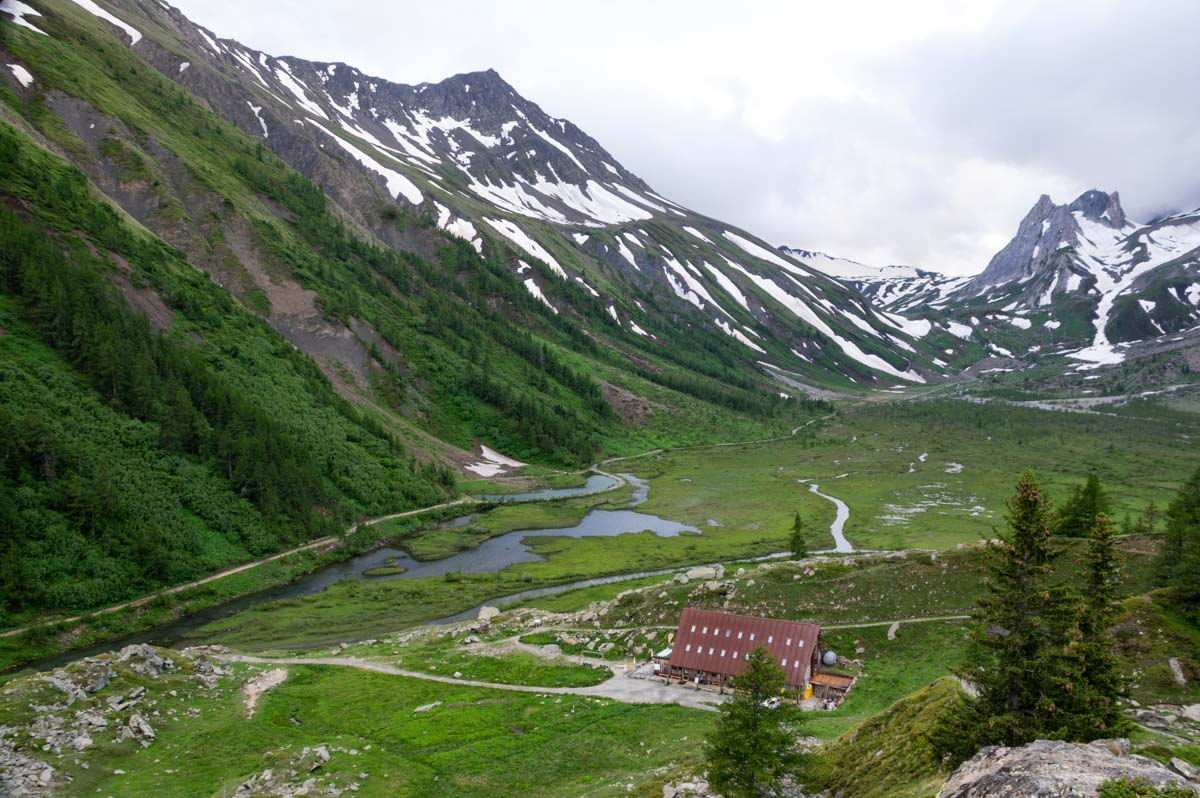
Le guide des refuges sur le Tour du Mont Blanc
Il y a trois ans, je réalisais un rêve : parcourir les 160 km de l’itinéraire de Grande Randonnée du Tour du Mont Blanc en 10 jours. Une des randonnée considérée à juste titre comme parmi les plus belles…
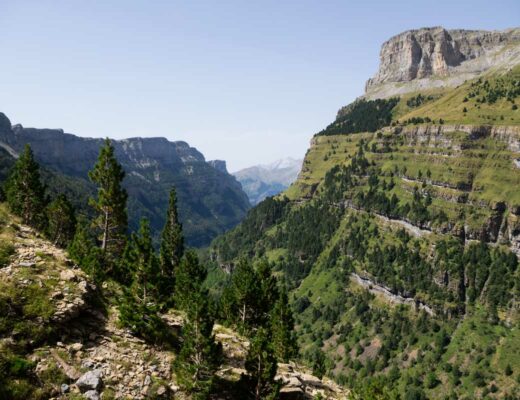
Randonnée de la Faja du Pelay dans le Canyon d’Ordesa
Après un premier aperçu du Parc National d’Ordesa et du Mont Perdu lors d’un road-trip dans les Hautes Pyrénées, les randonnées faciles que nous avions pu faire n’avait qu’attisé ma curiosité envers ce parc naturel présentant parmi les plus…

Visiter Alquezar et la Sierra de Guara
Situé au pied du massif de la Sierra de Guara dans l’Aragon, aux contreforts des Pyrénées et à seulement 2h de route de la frontière française, le village médiéval d’Alquezar fait sans aucun doute parti des plus beaux villages…

Pourquoi est-il important de souscrire à une assurance voyage ?
Quelles sont les principales couvertures offertes par une assurance voyage ? La Couverture en Cas de Maladie ou d’Accident L’un des principaux avantages de souscrire à une assurance voyage est la protection financière en cas de maladie ou d’accident.…

Visiter Essaouira en 1 journée
C’est par Essaouira que nous avons commencé notre premier voyage au Maroc, un road-trip au départ de Marrakech. Essaouira est une très jolie ville portuaire et touristique située sur la côté Atlantique du Maroc. Il n’y a pas énormément…
Pale Blue Dot at 30: Voyager 1's iconic photo of Earth from space reveals our place in the universe
The photo shows Earth as it truly is — a lonely outpost of life in an incomprehensibly vast cosmos.

Thirty years ago today, humanity got a chance to see itself in a whole new light.
On Feb. 14, 1990, NASA's Voyager 1 probe snapped a photo of Earth from 3.7 billion miles (6 billion kilometers) away. The image shows our home planet as it truly is — a tiny, lonely outpost of life in an incomprehensibly vast cosmos — and became iconic as a result.
The Voyager 1 team sensed at the time that the " Pale Blue Dot ," as the photo has come to be known, would be an important social document, said planetary scientist Candy Hansen, who served as the experiment representative for the Voyager imaging team and was the first person to set eyes on the Pale Blue Dot photo when it came down to Earth.
Related: Voyager at 40: 40 photos from NASA's epic 'Grand Tour' mission
The Cold War had not yet thawed completely in early 1990. The Pale Blue Dot had the potential to remind folks around the world that we're all in this together, no matter how many nuclear warheads one superpower may be aiming at another, Hansen explained. And the image remains vital today, because its message is timeless, she added.
"Now, we have climate change as an existential threat," Hansen, who now works for the Arizona-based Planetary Science Institute, told Space.com. "And we need to remind ourselves again that there's one planet that is hospitable to humans. Even if we colonize the moon or Mars one day, neither one of those bodies is really going to be able to support seven billion of us. So, we need to take care of this planet."
A family portrait

Voyager 1 launched a few weeks after its twin, Voyager 2 , back in 1977. Together, the two probes conducted an unprecedented "grand tour" of the solar system's giant planets, flying by Jupiter, Saturn, Uranus and Neptune.
Get the Space.com Newsletter
Breaking space news, the latest updates on rocket launches, skywatching events and more!
The tour was over after the Neptune encounter, which Voyager 2 executed in August 1989. But the two spacecraft kept on flying, out toward the great unknown of interstellar space. Mission team members decided to turn off the two probes' cameras to save precious power during the long journey (and because they probably wouldn't have many chances to photograph interesting things out beyond Neptune anyway).
But Voyager 1 turned around to take one last look at home before closing its eyes. And not just its home planet — its home system. The probe took a "family portrait" series of 60 photos, capturing the sun, Venus, Jupiter, Saturn, Uranus and Neptune in addition to Earth. (Mercury was too close to the sun to be imaged, and sunlight bouncing around in the camera blocked Mars out.)
The Pale Blue Dot was the brainchild of famed astronomer, science communicator and Voyager imaging team member Carl Sagan , who first proposed snapping Earth with Voyager cameras in 1981 . And Sagan helped popularize the image and its message after the fact, writing a book called "Pale Blue Dot: A Vision of the Human Future in Space" (Random House, 1994).
Earth was one of the last things Voyager 1 saw. The probe took the Pale Blue Dot photo at 0448 GMT on Feb. 14, 1990, just 34 minutes before its cameras were shut off forever. (The very last photos Voyager 1 took, however, were of the sun, Hansen said.)
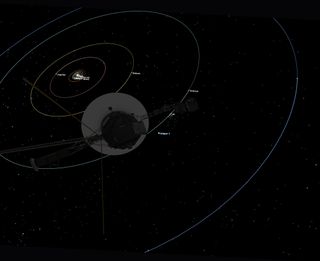
All of the image data didn't come down to Earth until May 1, 1990, NASA officials wrote in a Pale Blue Dot explainer . Hansen couldn't wait to see our planet through Voyager 1's eyes — and, when she finally got the chance, doing so proved a bit more difficult than she had expected.
"It was actually kind of terrifying, because I didn't see it at first," she said. "Because of that beam of scattered light, it didn't pop out at me immediately. And then I was so afraid that we had missed it, or screwed up the exposure or something. So, it was such a relief when I spotted it."
That beam of scattered light may have briefly stopped Hansen's heart, but it adds a certain poetic flair to the Pale Blue Dot photo. It's almost as if the cosmos threw a spotlight onto our precious little world for a moment, to help us make it out in the abyss.
Related: Earth quiz: Do you really know your planet?
Still exploring
Both Voyagers kept flying long after February 1990. They cruised through the outer solar system and eventually popped free of the sun's sphere of influence into interstellar space.
Voyager 1 accomplished this unprecedented feat in 2012 , and its twin followed suit six years later. And both probes are still going strong. They should have enough power left to continue gathering data about their exotic surroundings through 2024 or so, mission team members have said.
The Voyager program has accomplished amazing things, shedding considerable light on the giant planets and the dark realms far beyond them. (Voyager 2, for example, is still the only spacecraft ever to get up-close looks at Uranus or Neptune.) And the Pale Blue Dot is a unique part of this diverse and layered legacy.
"The Earth picture reaches to our hearts, I would say, and all the rest goes in our heads," Hansen said.
- Photos from NASA's Voyager 1 and 2 probes
- Voyager 1's historic flyby of Jupiter in photos
- Voyager 1 spacecraft's road to interstellar space: A photo timeline
Mike Wall's book about the search for alien life, " Out There " (Grand Central Publishing, 2018; illustrated by Karl Tate ), is out now. Follow him on Twitter @michaeldwall . Follow us on Twitter @Spacedotcom or Facebook .

OFFER: Save at least 56% with our latest magazine deal!
All About Space magazine takes you on an awe-inspiring journey through our solar system and beyond, from the amazing technology and spacecraft that enables humanity to venture into orbit, to the complexities of space science.
Join our Space Forums to keep talking space on the latest missions, night sky and more! And if you have a news tip, correction or comment, let us know at: [email protected].

Michael Wall is a Senior Space Writer with Space.com and joined the team in 2010. He primarily covers exoplanets, spaceflight and military space, but has been known to dabble in the space art beat. His book about the search for alien life, "Out There," was published on Nov. 13, 2018. Before becoming a science writer, Michael worked as a herpetologist and wildlife biologist. He has a Ph.D. in evolutionary biology from the University of Sydney, Australia, a bachelor's degree from the University of Arizona, and a graduate certificate in science writing from the University of California, Santa Cruz. To find out what his latest project is, you can follow Michael on Twitter.
Satellites watch as 4th global coral bleaching event unfolds (image)
Happy Earth Day 2024! NASA picks 6 new airborne missions to study our changing planet
Watch live today as NASA astronauts fly to launch site for 1st crewed Boeing Starliner mission to ISS
Most Popular
- 2 Stellar detectives find suspect for incredibly powerful 'superflares'
- 3 'Star Trek: Discovery' S05, E05 is a quality installment, but it's weighed down by another anchor of nostalgia
- 4 China launches 3 astronauts to Tiangong space station on Shenzhou 18 mission (video)
- 5 Across the universe, dark matter annihilation could be warming up dead stars
- The Inventory
Support Quartz
Fund next-gen business journalism with $10 a month
Free Newsletters
Let’s take a moment to look at the mesmerizing images from Voyager 1
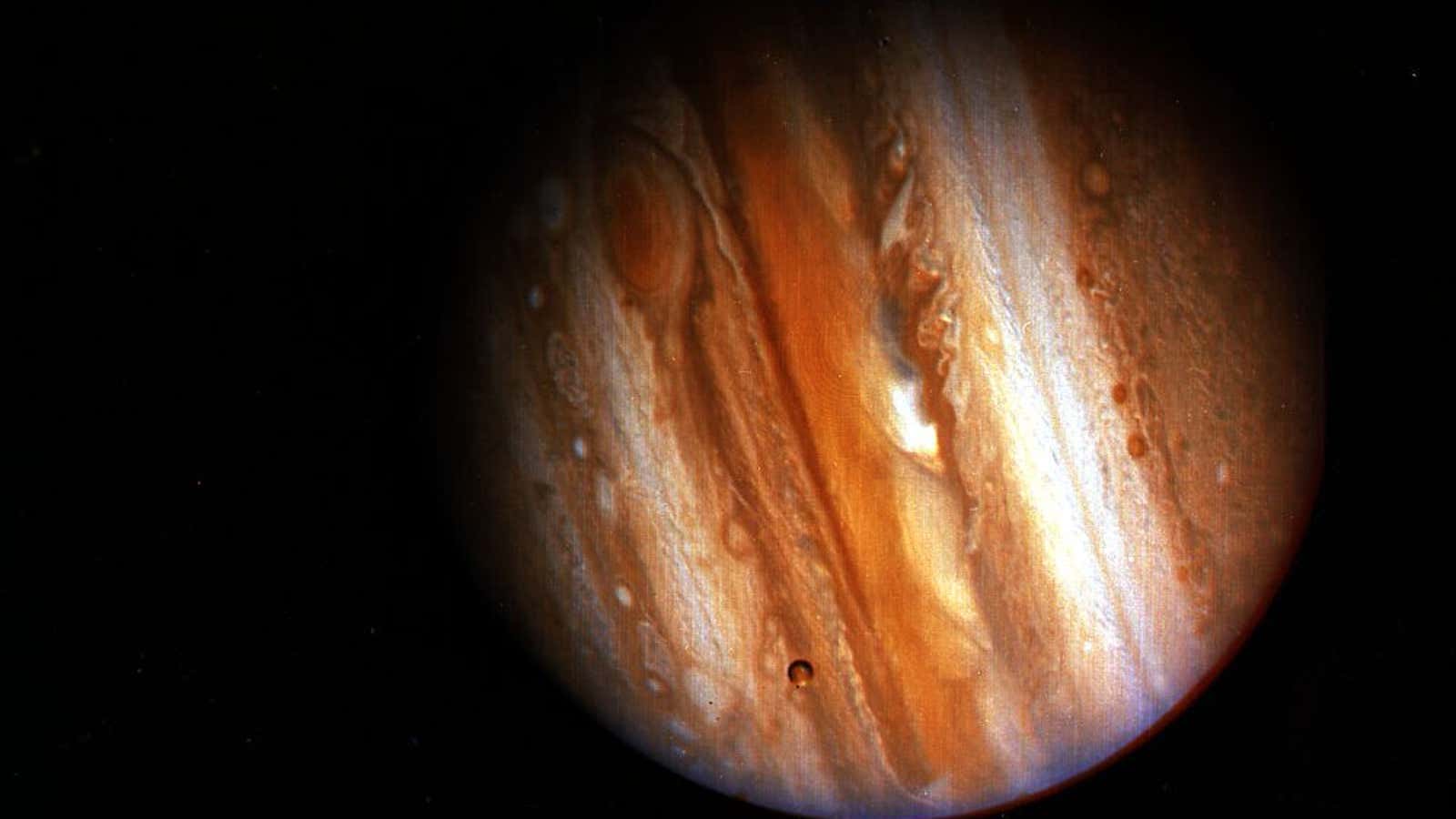
In 1977, NASA launched two Voyager probes, equipped with golden records describing human accomplishment, on a mission to explore the farthest reaches of the solar system. Each record catalogued our music, our greetings, our art and photography.
Forty years later, both spacecrafts are still hurtling through space , exploring parts of the universe where nothing from Earth has visited before. Voyager 1 is now in interstellar space, 13 billion miles away from Earth. Voyager 2 is passing through the heliosheath, the outermost layer of the heliosphere, before it, too, reaches interstellar space.
Last week, in an amazing feat of engineering, NASA engineers turned on Voyager 1’s backup thrusters after they’d been dormant for 37 years. The thrusters will help reorient the spacecraft’s antenna back to Earth, so we can receive its signal for just a little longer.
It’s a fine moment to reflect on the incredible images Voyager 1 has sent back over its lifetime. The probe gave us the first “ portrait ” of our solar system, and memorably mesmerizing shots of Saturn and Jupiter.
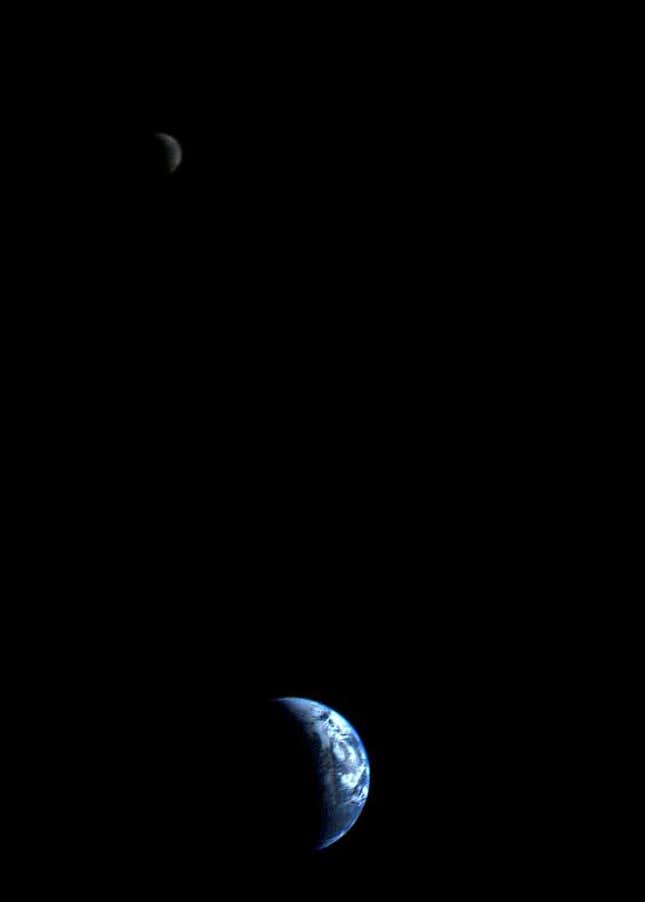
Watch NASA’s moving compilation of images from both Voyagers below:
📬 Sign up for the Daily Brief
Our free, fast, and fun briefing on the global economy, delivered every weekday morning.
45 years ago, NASA's Voyager spacecraft flew past Jupiter. See how the iconic video compares to photos of the planet today.
- NASA's Voyager 1 spacecraft flew past Jupiter 45 years ago, capturing iconic footage.
- The Voyager probe's movie of Jupiter made history, revealing the planet like never before.
- See how those images compare to Jupiter pictures from NASA's Juno mission today.

Voyager was one of NASA's most ambitious missions , and Jupiter is arguably our solar system's most beautiful planet. So when the two met for the first time, it was history — and art — in the making.
NASA launched its twin Voyager spacecrafts in the summer of 1977. Voyager 1 was first to approach Jupiter, entering the gas giant's orbit in March 1979.
As the probe approached our solar system 's largest and swirliest planet that spring, it captured the iconic video below. It's a time-lapse movie made of 66 images.
"Jupiter is far more complex in its atmospheric motions than we had ever imagined," Bradford Smith, who was leading the imaging team, said in a press briefing that February, even before Voyager had gotten close enough to make this video, according to Astronomy.com .
He added that his team was "happily bewildered."
The spacecraft made its closest approach to Jupiter on March 5, 1979.
Related stories
The footage was monumental. To put it in perspective, prior to Voyager, the best close-up images of Jupiter were from the Pioneer 10 spacecraft. They looked like this:
Voyager was a major upgrade.
The first probe photographed Jupiter for 4 months, capturing 19,000 pictures. Voyager 2 entered Jupiter's orbit as Voyager 1 was on its way out and took an additional 14,000 photos before completing its Jupiter encounter in August 1979.
That was 45 years ago. Today we have a wealth of stunningly detailed, colorful snapshots of Jupiter and its moons , thanks to NASA's more modern Juno spacecraft, which has been orbiting the gas giant since 2016.
Compared to Voyager's first glimpse of Jupiter, Juno's portraits capture its intricate features in finer detail. With the help of modern image processing, Jupiter's colors, patterns, and violent weather are on full display.
The planet's iconic Great Red Spot is an anticyclone large enough to swallow Earth. Juno data has revealed that it extends up to 310 miles below the visible surface of the Jovian atmosphere.
That's greater than the distance between you and the International Space Station when it's overhead.
Juno even spots Jupiter's moons up close sometimes — such as Io, which Voyager discovered to have active volcanoes spewing lava into space .
Juno has even spotted Io's shadow gliding over Jupiter's turbulent surface.
The Voyager spacecrafts are now in interstellar space, the only human-made objects to ever leave our solar system. They are both slowly losing their power supply.
Juno should still be circling Jupiter, and sending back gorgeous images like this, until at least September 2025.
That's when Juno's current mission ends, but if it's still functional NASA might keep it going for more years to come.
Watch: Check out 6 stunning images taken by James Webb Space Telescope and what they reveal
- Main content
More From Forbes
Nasa celebrates as 1977’s voyager 1 phones home at last.
- Share to Facebook
- Share to Twitter
- Share to Linkedin
NASA’s Voyager 1 spacecraft is depicted in this artist’s concept traveling through interstellar ... [+] space, or the space between stars, which it entered in 2012.
Voyager 1 has finally returned usable data to NASA from outside the solar system after five months offline.
Launched in 1977 and now in its 46th year, the probe has been suffering from communication issues since November 14. The same thing also happened in 2022 . However, this week, NASA said that engineers were finally able to get usable data about the health and status of its onboard engineering systems.
Fixing Voyager 1 has been slow work. It’s currently over 15 billion miles (24 billion kilometers) from Earth, which means a radio message takes about 22.5 hours to reach it—and the same again to receive an answer.
The problem appears to have been its flight data subsystem, one of the spacecraft’s three onboard computers. Its job is to package the science and engineering data before it’s sent to Earth. Since the computer chip that stores its memory and some of its code is broken, engineers had to reinsert that code into a new location.
Next up for engineers at NASA’s Jet Propulsion Laboratory in California is to adjust other parts of the FDS software so Voyager 1 can resume sending science data.
The Best Romantic Comedy Of The Last Year Just Hit Netflix
Apple iphone 16 unique all new design promised in new report, the world s best beers according to the 2024 world beer cup, beyond the ‘heliopause’.
The longest-running and most distant spacecraft in history, Voyager 1, was launched on September 5, 1977, while its twin spacecraft, Voyager 2, was launched a little earlier, on August 20, 1977. Voyager 2—now 12 billion miles away and traveling more slowly—continues to operate normally.
Both are now beyond what astronomers call the heliopause—a protective bubble of particles and magnetic fields created by the sun, which is thought to represent the sun’s farthest influence. Voyager 1 got to the heliopause in 2012 and Voyager 2 in 2018.
The Pale Blue Dot is a photograph of Earth taken Feb. 14, 1990, by NASA’s Voyager 1 at a distance of ... [+] 3.7 billion miles (6 billion kilometers) from the sun. The image inspired the title of scientist Carl Sagan's book, "Pale Blue Dot: A Vision of the Human Future in Space," in which he wrote: "Look again at that dot. That's here. That's home. That's us."
Pale Blue Dot
Since their launch from Cape Canaveral, Florida, aboard Titan-Centaur rockets, Voyager 1 and Voyager 2 have had glittering careers. Both photographed Jupiter and Saturn in 1979 and 1980 before going their separate ways. Voyager 1 could have visited Pluto, but that was sacrificed so scientists could get images of Saturn’s moon, Titan, a maneuver that made it impossible for it to reach any other body in the solar system. Meanwhile, Voyager 2 took slingshots around the planets to also image Uranus in 1986 and Neptune in 1989—the only spacecraft ever to image the two outer planets.
On February 14, 1990, when 3.7 billion miles from Earth, Voyager 1 turned its cameras back toward the sun and took an image that included our planet as “a mote of dust suspended in a sunbeam.” Known as the “Pale Blue Dot,” it’s one of the most famous photos ever taken. It was remastered in 2019 .
Wishing you clear skies and wide eyes.

- Editorial Standards
- Reprints & Permissions

FlickSphere
21 Things About Star Trek That Fans Hesitate to Acknowledge
Posted: April 27, 2024 | Last updated: April 27, 2024
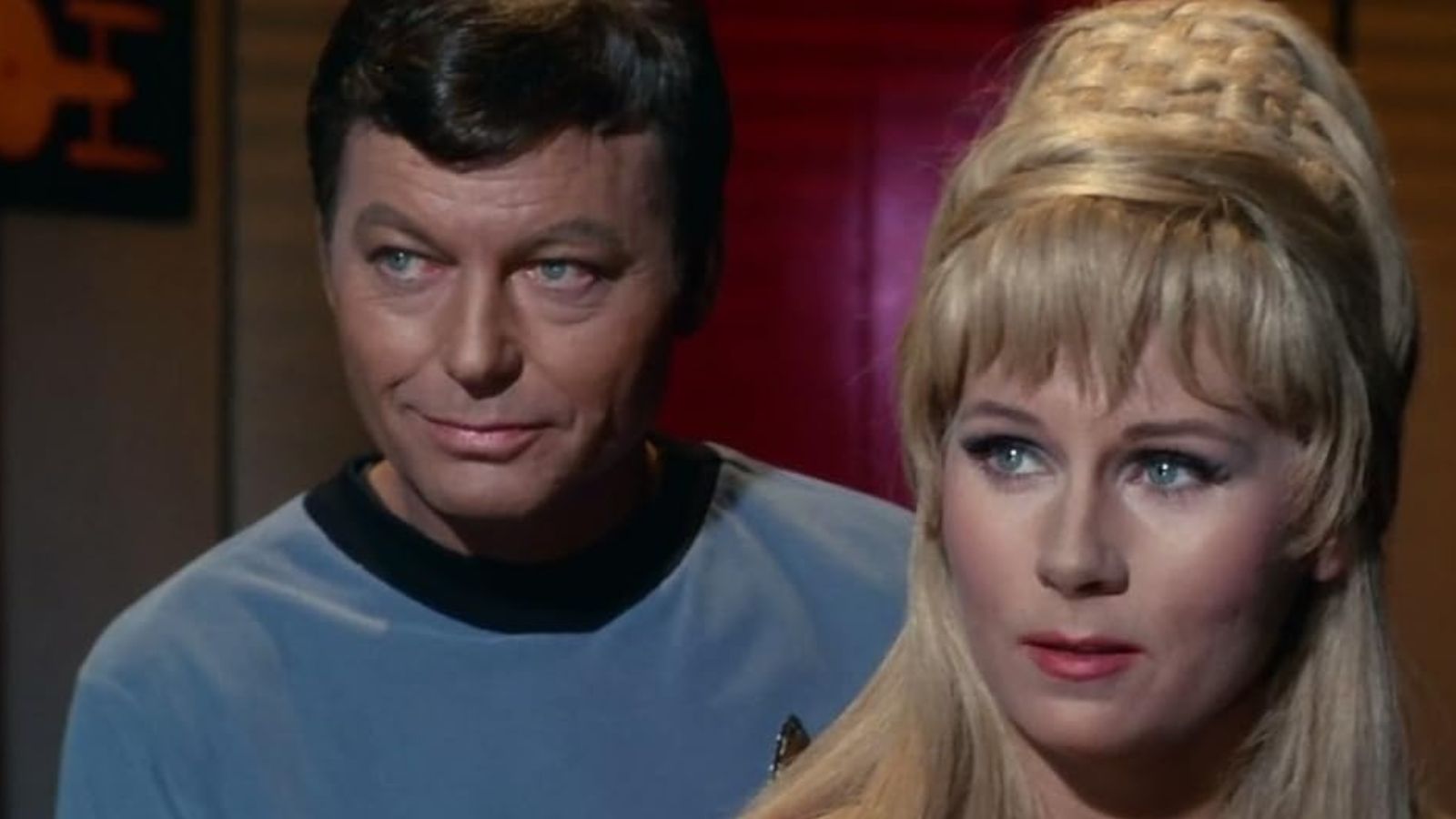
Star Trek Reused the Same Sets Often
There were some sexist vibes.
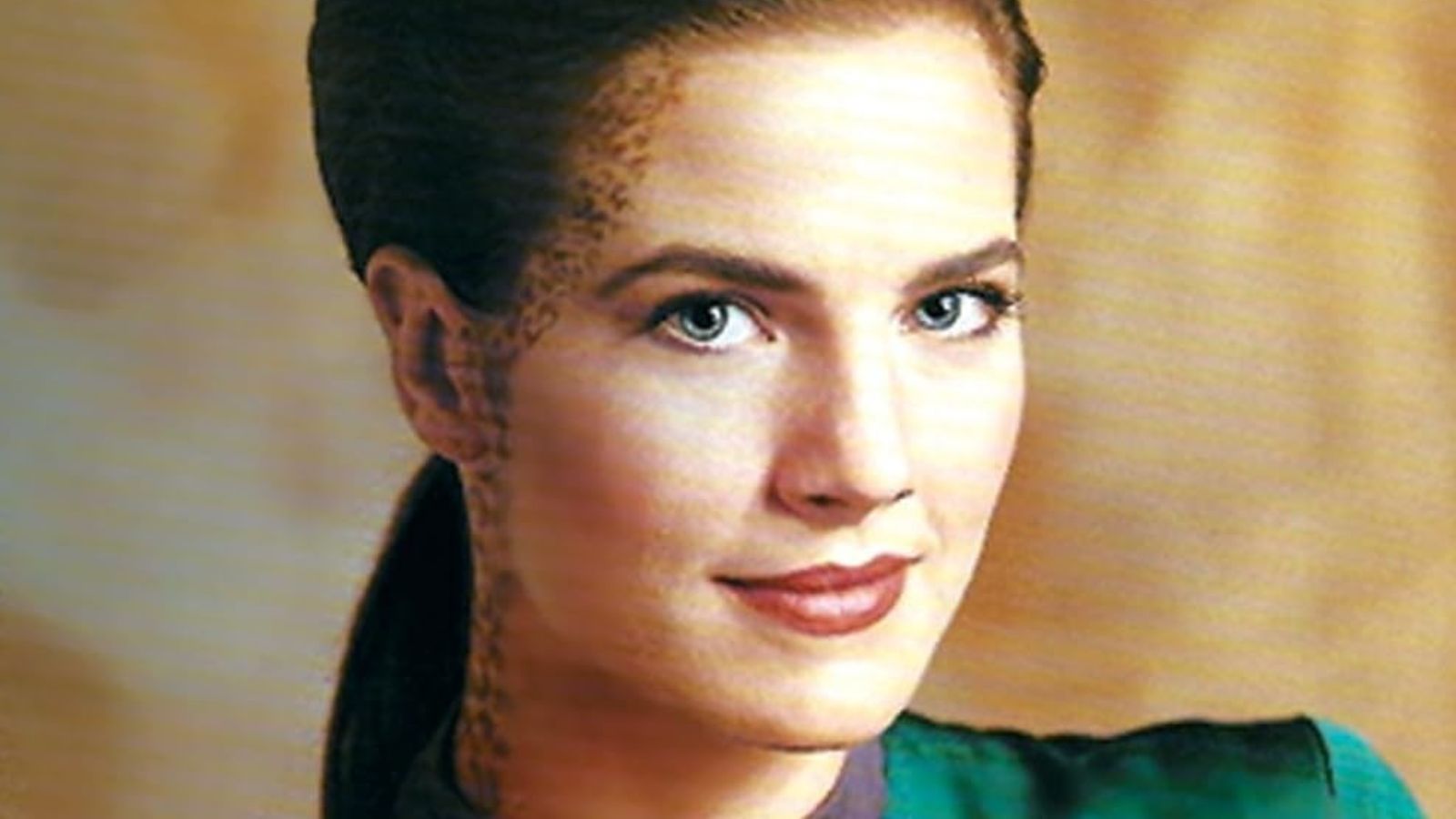
Star Trek Was Forced to Move With the Times
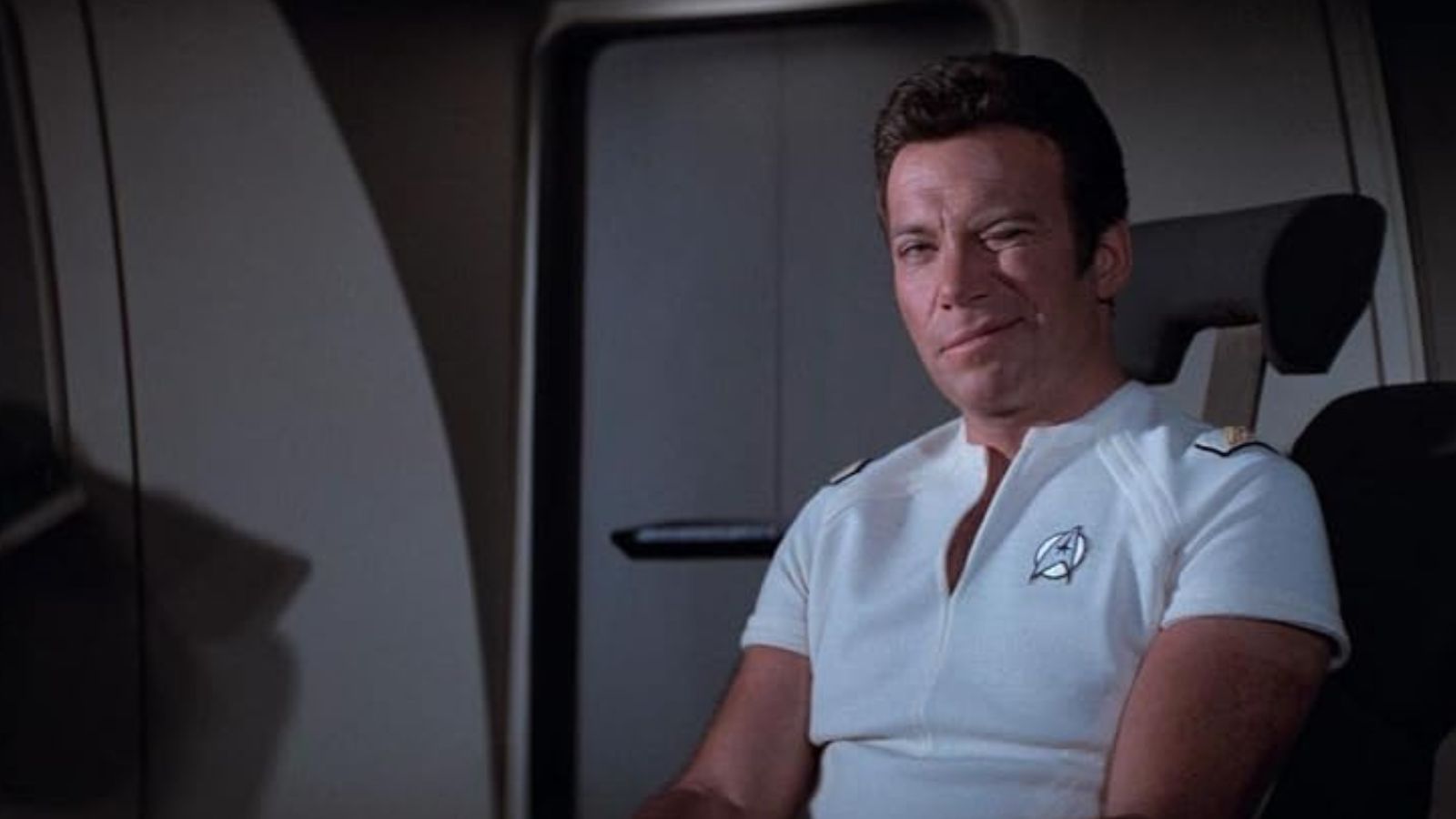
We’ve All Fancied an Alien on Star Trek at Some Point in Our Lives
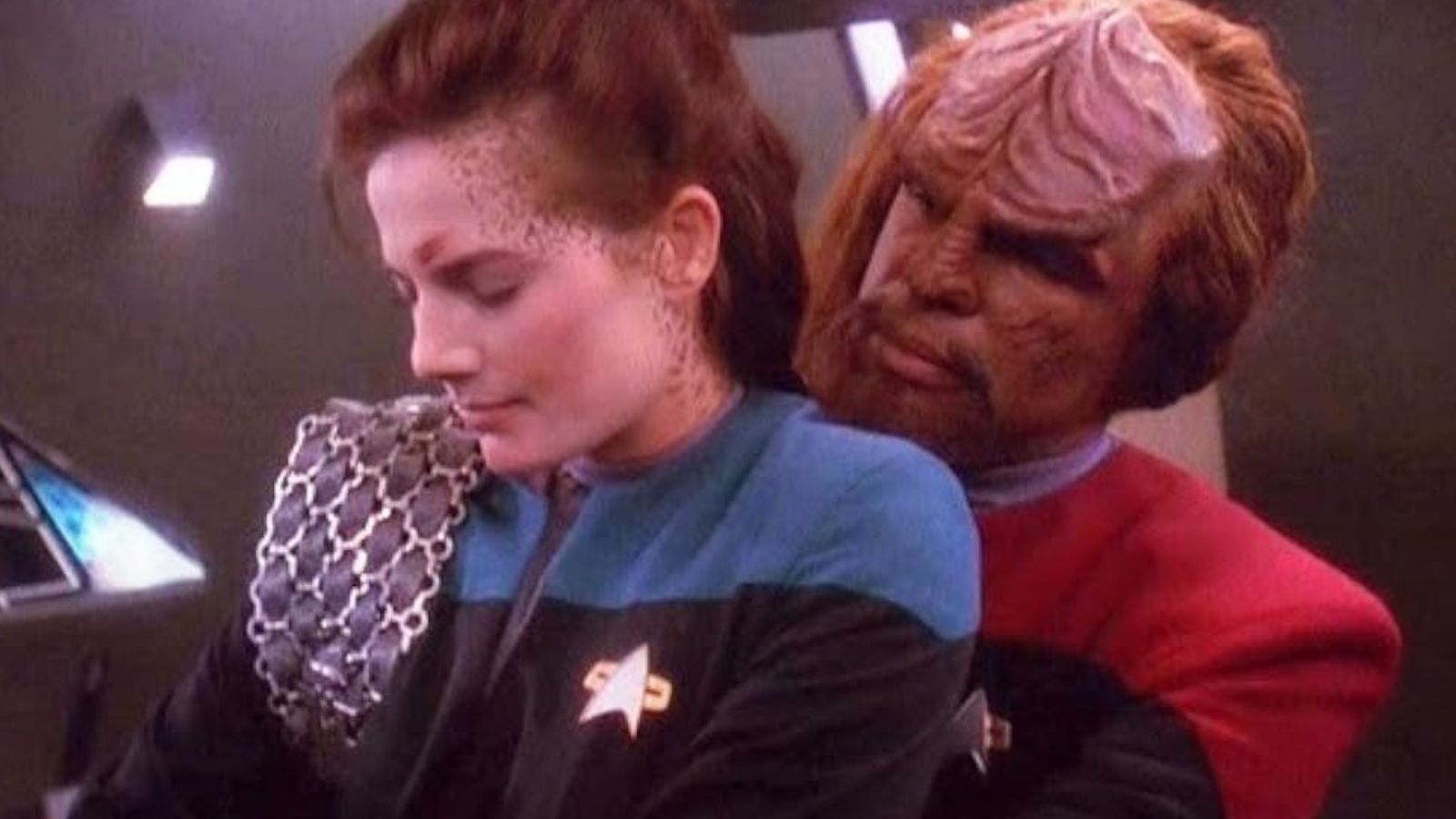
Drama in Deep Space Nine’

Star Trek Voyager Criticized for Having a Female Captain
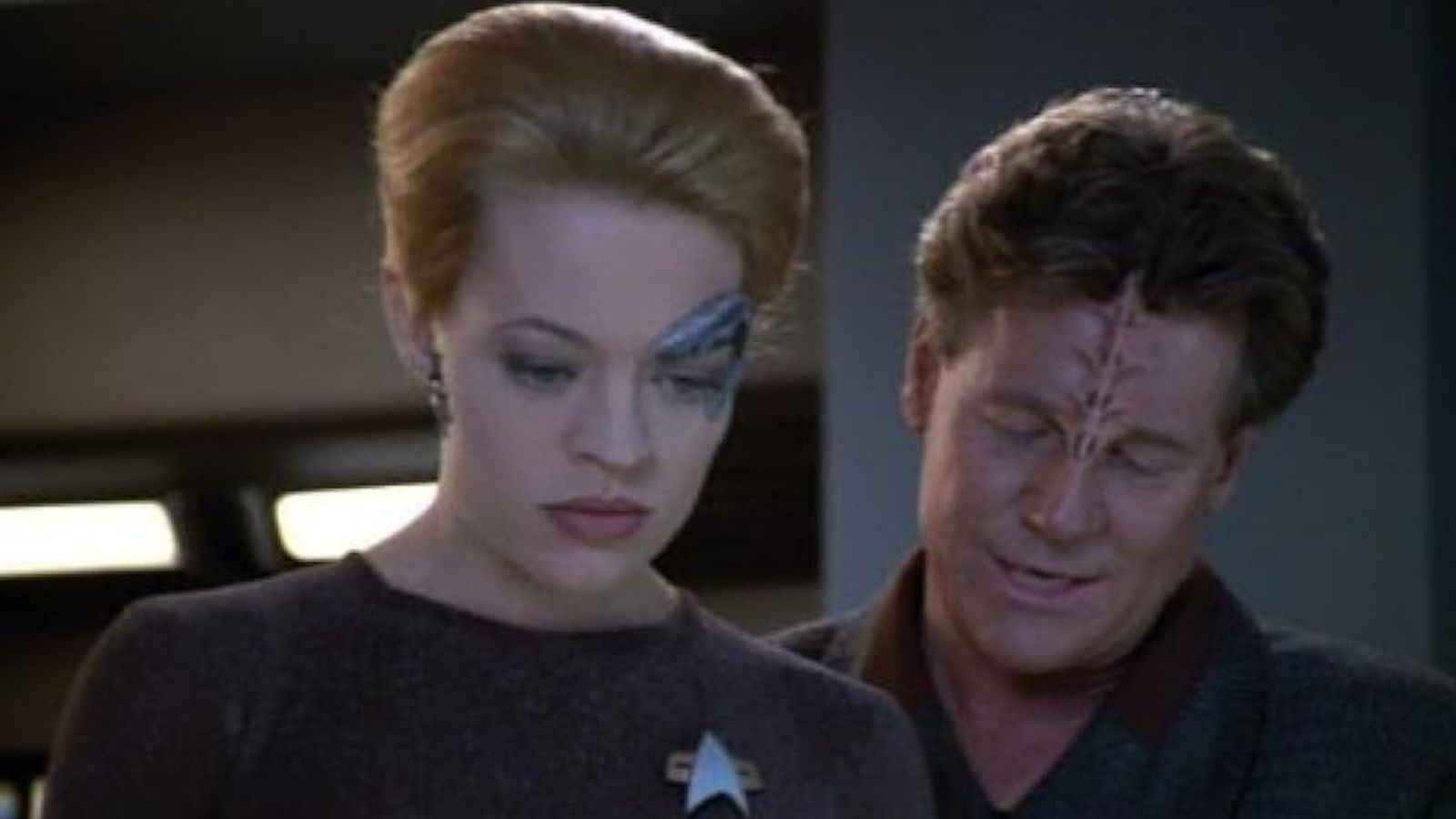
The Story Lines Weren’t Always Great
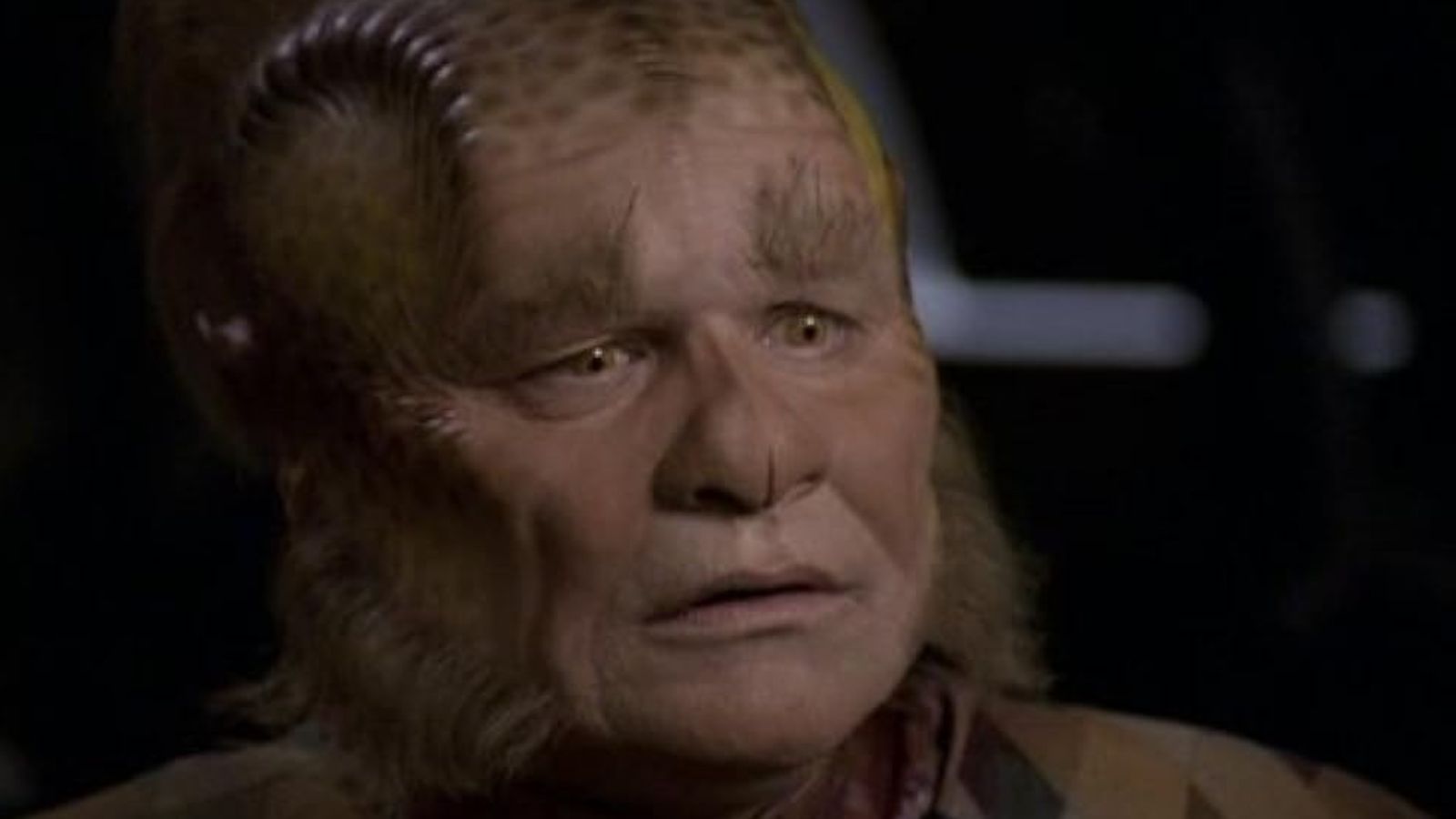
Some of the Costumes Were Not Good

We Want Captain Picard Back

Most Fans Preferred the TV Series to the Movies

We Have all Tried to Speak Klingon
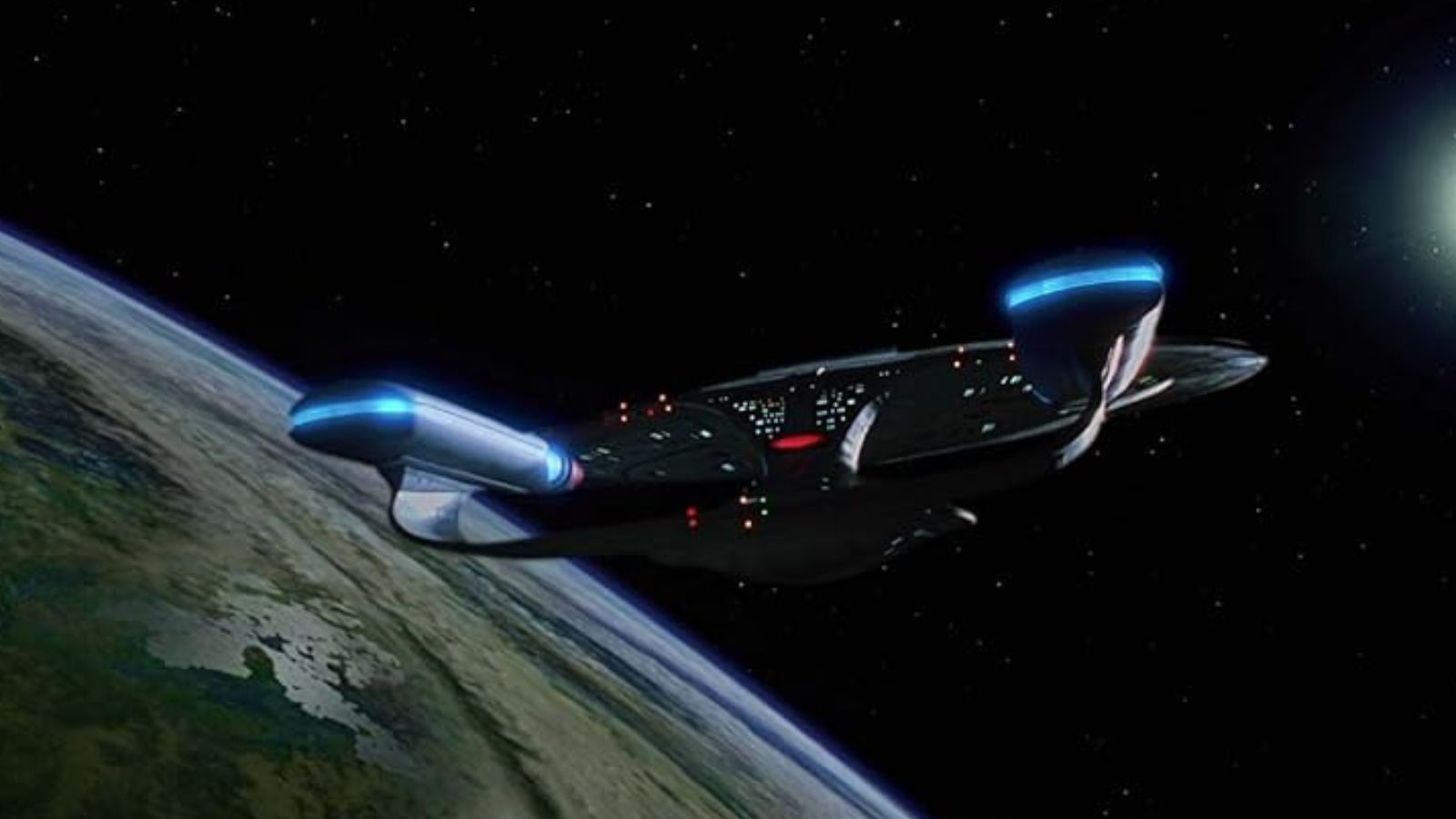
Sometimes, Star Trek Was Scary
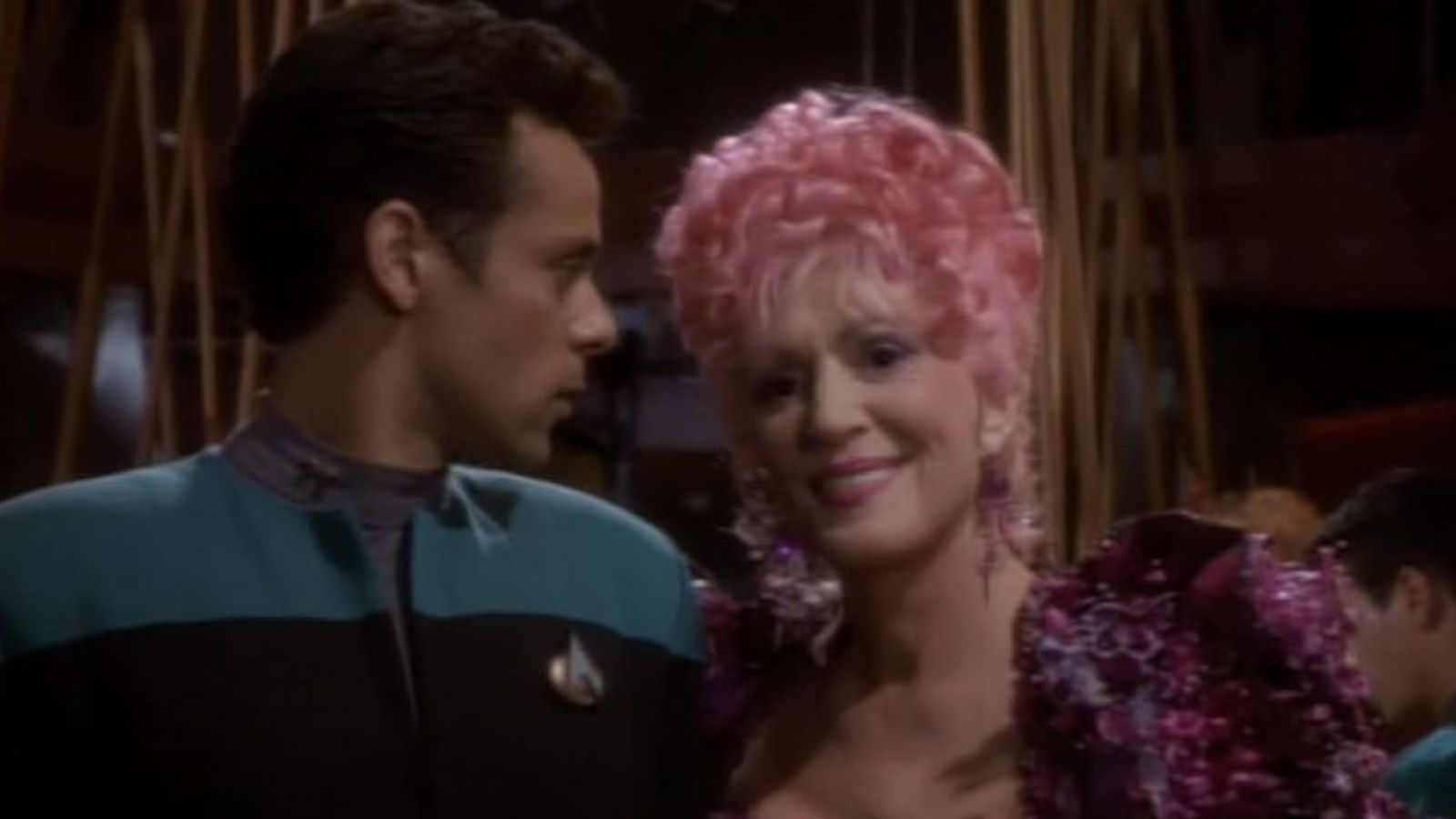
The Theme Tune Was Awesome

Star Trek’s Original First Officer Was a Woman

Spock Impressions
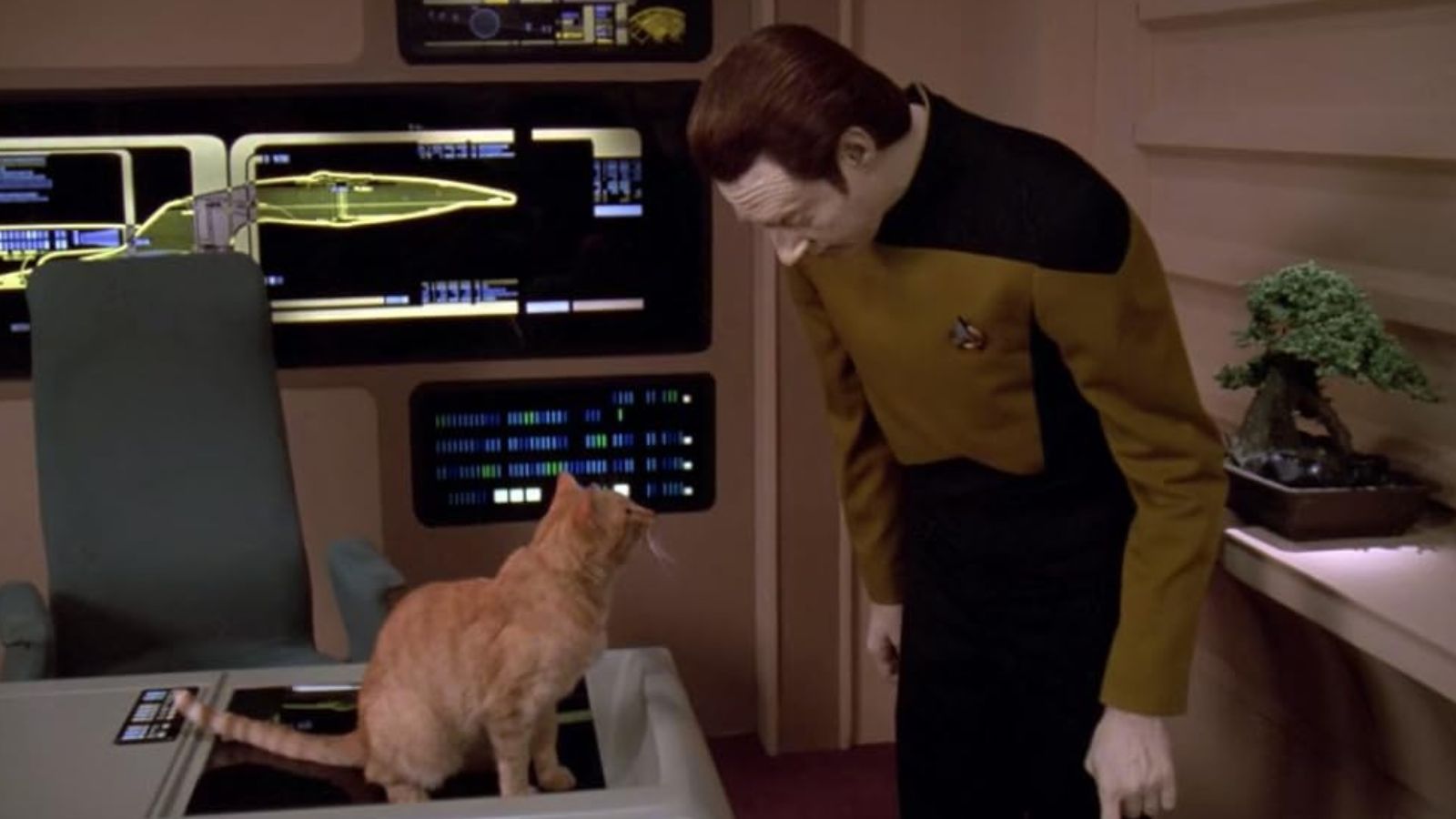
Some of the Tech from the Trek Has Already Become a Reality
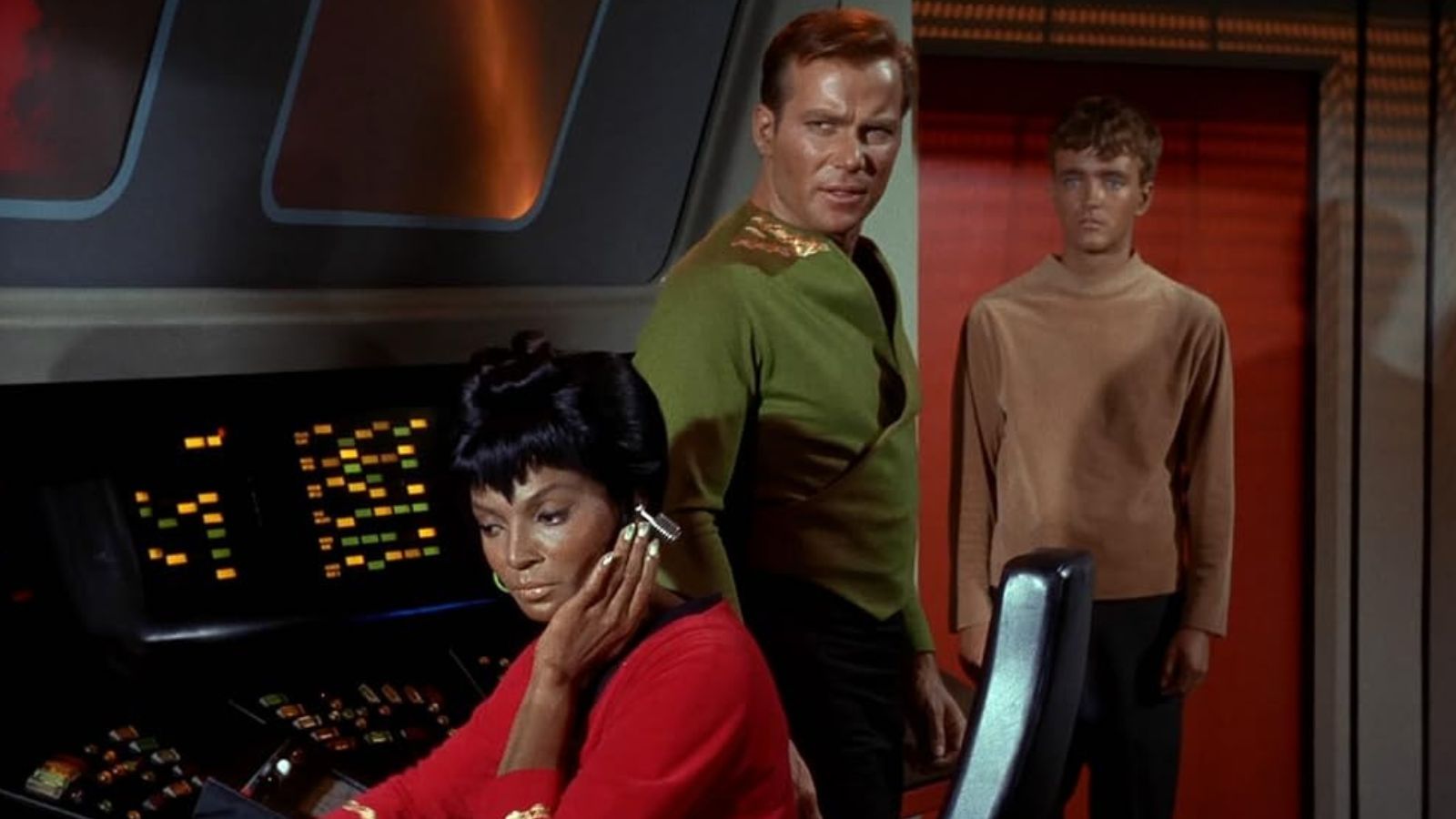
William Shatner and Leonard Nimoy Both Got Tinnitus

Spock’s Vulcan Salute is a Special Blessing in Hebrew

Star Trek Didn’t Only Recycle its Sets; It Also Recycled Actors
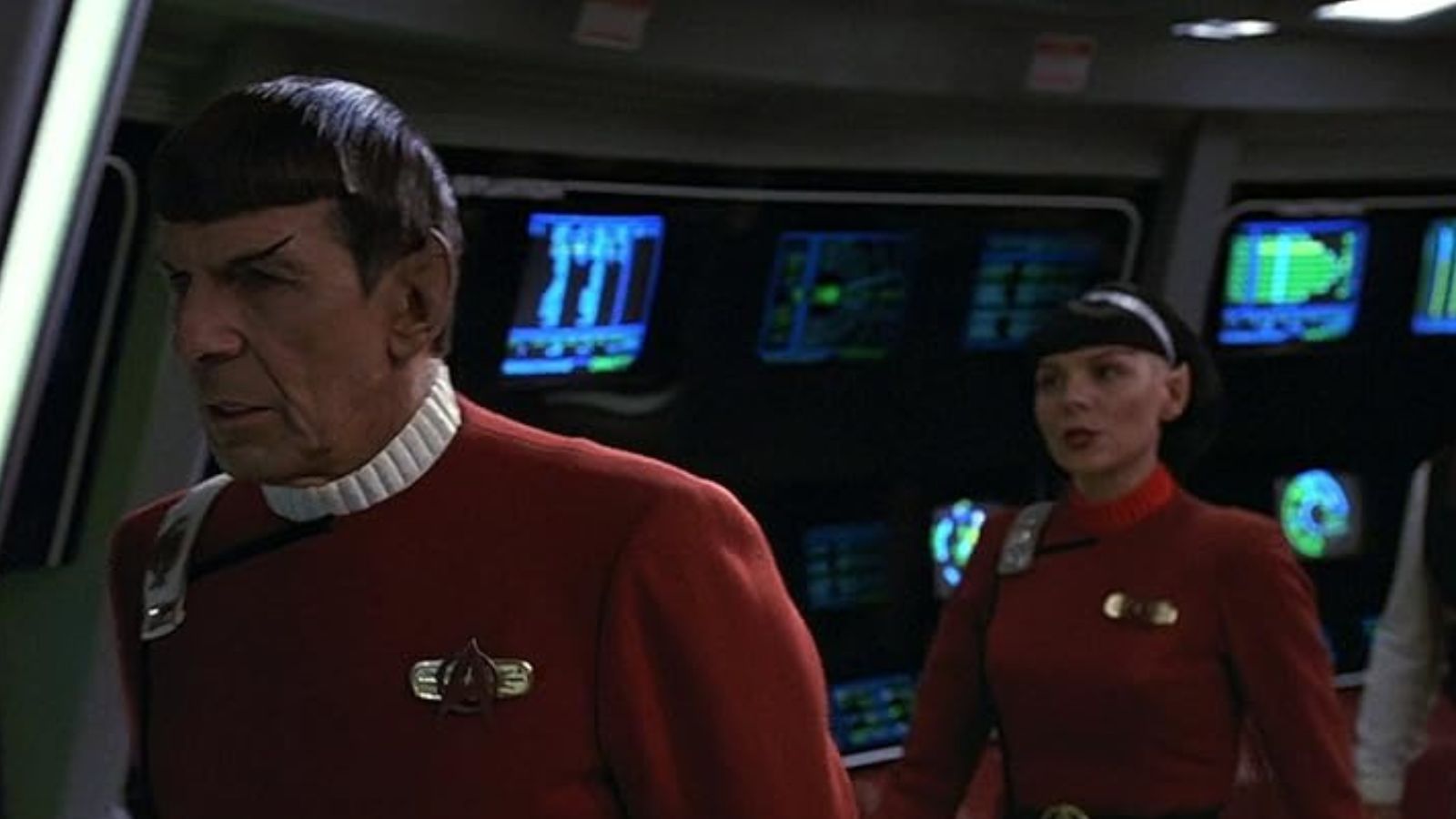
The Star Trek Brand Has Become Over-Commercialized

18 Formerly Beloved TV Shows That Would Flunk the Political Correctness Test Today

18 Films That Went Too Woke in the Last Decade

Empty Screens: 18 Movies Where Almost Nothing Really Happens
More for You
Judge upholds disqualification of challenger to judge in Trump’s Georgia election interference case
Harvard psychologist shares 5 toxic things 'highly narcissistic' people always do in relationships
Martin Lewis issues warning to people choosing air fryer over oven
A woman said her tattoos got her rejected for a job, but experts say personality is far more important
7 Ways People Destroy the Value of Their Homes, According to a Real Estate Agent
25 incredible character actors who don't get the credit they deserve
Texans QB CJ Stroud devastated by 49ers selection of Ricky Pearsall
Harvard psychologist: If you say 'yes' to any of these 9 questions, you're 'more emotionally secure than most'
Scientists have discovered the maximum age a human can live to
Experts Say These Are The 5 Worst Foods For Your Cholesterol
10 best new Netflix originals you need to add to your watch list
The most expensive state to live in isn't California or New York, based on data. Here are the top 10.
The Greatest Heroines of All Time
People Who Don’t Show Empathy Usually Have These 18 Traits
Planning for potential presidential transition underway as Biden administration kicks it off
Barack Obama shares his No. 1 piece of advice for his own daughters: Don't let your hunger for success ruin your happiness
This is the ideal sleep temperature for older adults, new study finds
Marriage counsellor shares one sign your relationship is really over
8 Netflix shows with a perfect Rotten Tomatoes score you need to watch
Here is the true value of having a fully paid-off home in America — especially when you're heading into retirement

IMAGES
VIDEO
COMMENTS
The Voyager 1 and 2 Saturn encounters occurred nine months apart, in November 1980 and August 1981. Voyager 1 is leaving the solar system. Voyager 2 completed its encounter with Uranus in January 1986 and with Neptune in August 1989, and is now also en route out of the solar system.
1720x1720x3. PIA18182: Uranus as seen by NASA's Voyager 2. Full Resolution: TIFF (8.879 MB) JPEG (78.82 kB) 1989-10-02. Triton. Voyager. 932x1884x1. PIA14448:
PrevPage 1 of 15. This image of the Earth and moon are in a single frame. Voyager was the first spacecraft to achieve this and captured the iconic image on Sept. 18, 1977, by Voyager 1 when it was ...
Here are 18 groundbreaking photos from their incredible mission. This montage shows examples of striking images of the solar system Voyager 1 and 2 took on their missions. NASA/JPL/Insider. Nearly ...
Image: NASA / JPL / Ted Stryk. Saturn as seen by Voyager 1 The last picture from Voyager 1's approach to Saturn in which the entire planet and ring system can be seen in a single frame. Image: NASA/JPL/Björn Jónsson. Voyager 2's best view of Enceladus This was the Voyager mission's best view of Enceladus, captured by Voyager 2 on August 26 ...
The Voyager aircraft circles before landing at Edwards Air Force Base, Edwards, California, to complete its record breaking, nonstop unfueled... The National Aeronautics and Space Administration. NASA explores the unknown in air and space, innovates for the benefit of humanity, and inspires the world through discovery. About NASA's Mission.
Voyager 1 has been exploring our solar system for more than 45 years. The probe is now in interstellar space, the region outside the heliopause, or the bubble of energetic particles and magnetic fields from the Sun. Voyager 1 is the first human-made object to venture into interstellar space. Voyager 1 discovered a thin ring around Jupiter and ...
Itinéraire pour un road trip de 10 jours dans l'Aragon au Nord de l'Espagne. Située entre la Navarre et la Catalogne, l'Aragon est la région centrale du Nord de l'Espagne. Elle englobe une partie des Pyrénées, la ville de Huesca, de Saragosse et descend au Sud jusqu'à Teruel. Début septembre, nous avons réalisé…. 23 mars 2024.
On Feb. 14, 1990, NASA's Voyager 1 probe snapped a photo of Earth from 3.7 billion miles (6 billion kilometers) away. The image shows our home planet as it truly is — a tiny, lonely outpost of ...
Our crescent Earth and moon in the first picture of its kind ever captured by a spacecraft. Taken on Sept. 18, 1977, 7 million miles (12 million km) away from Earth. Voyager 1's closest approach ...
Science. 45 years ago, NASA's Voyager spacecraft flew past Jupiter. See how the iconic video compares to photos of the planet today. Morgan McFall-Johnsen and Ellyn Lapointe. Feb 24, 2024, 6:17 AM ...
Pale Blue Dot is a photograph of Earth taken on February 14, 1990, by the Voyager 1 space probe from an unprecedented distance of approximately 6 billion kilometers (3.7 billion miles, 40.5 AU), as part of that day's Family Portrait series of images of the Solar System.. In the photograph, Earth's apparent size is less than a pixel; the planet appears as a tiny dot against the vastness of ...
Voyager 1 is a space probe launched by NASA on September 5, ... The record, made under the direction of a team including Carl Sagan and Timothy Ferris, includes photos of the Earth and its lifeforms, a range of scientific information, spoken greetings from people such as the Secretary-General of the United Nations ...
Images of Voyager. Get an in-depth look at the science instruments aboard the Voyager spacecraft, plus diagrams illustrating the spacecraft's trajectory, orbit and mechanics. Here you'll also find a number of artist's concepts explaining the anatomy of our solar system and the Voyagers' journey to reach interstellar space.
Voyager en photos - Blog et carnet de voyage. 1,728 likes · 1 talking about this. La page du blog www.voyagerenphotos.com où je partage avec vous mes bons plans voyage et mes meille Voyager en photos - Blog et carnet de voyage
Voyager 1 got to the heliopause in 2012 and Voyager 2 in 2018. The Pale Blue Dot is a photograph of Earth taken Feb. 14, 1990, by NASA's Voyager 1 at a distance of ... [+] 3.7 billion miles (6 ...
Photo Credit: Paramount. The Star Trek Brand Has Become Over-Commercialized Although some might not want to admit it, Star Trek inspired thirteen movies, multiple spin-off series, and over 125 ...